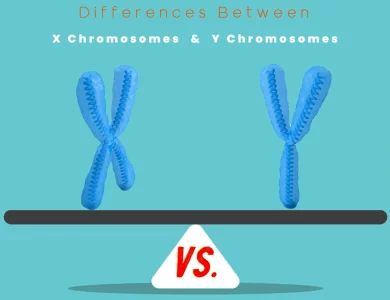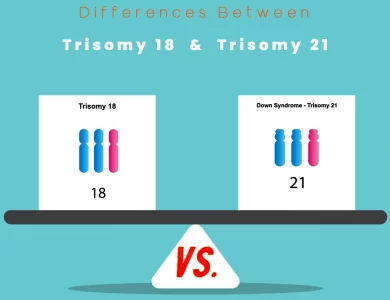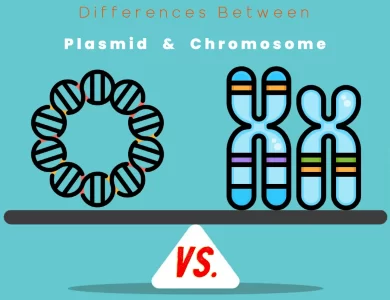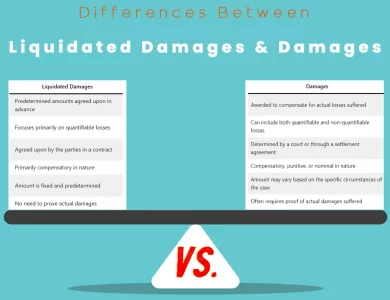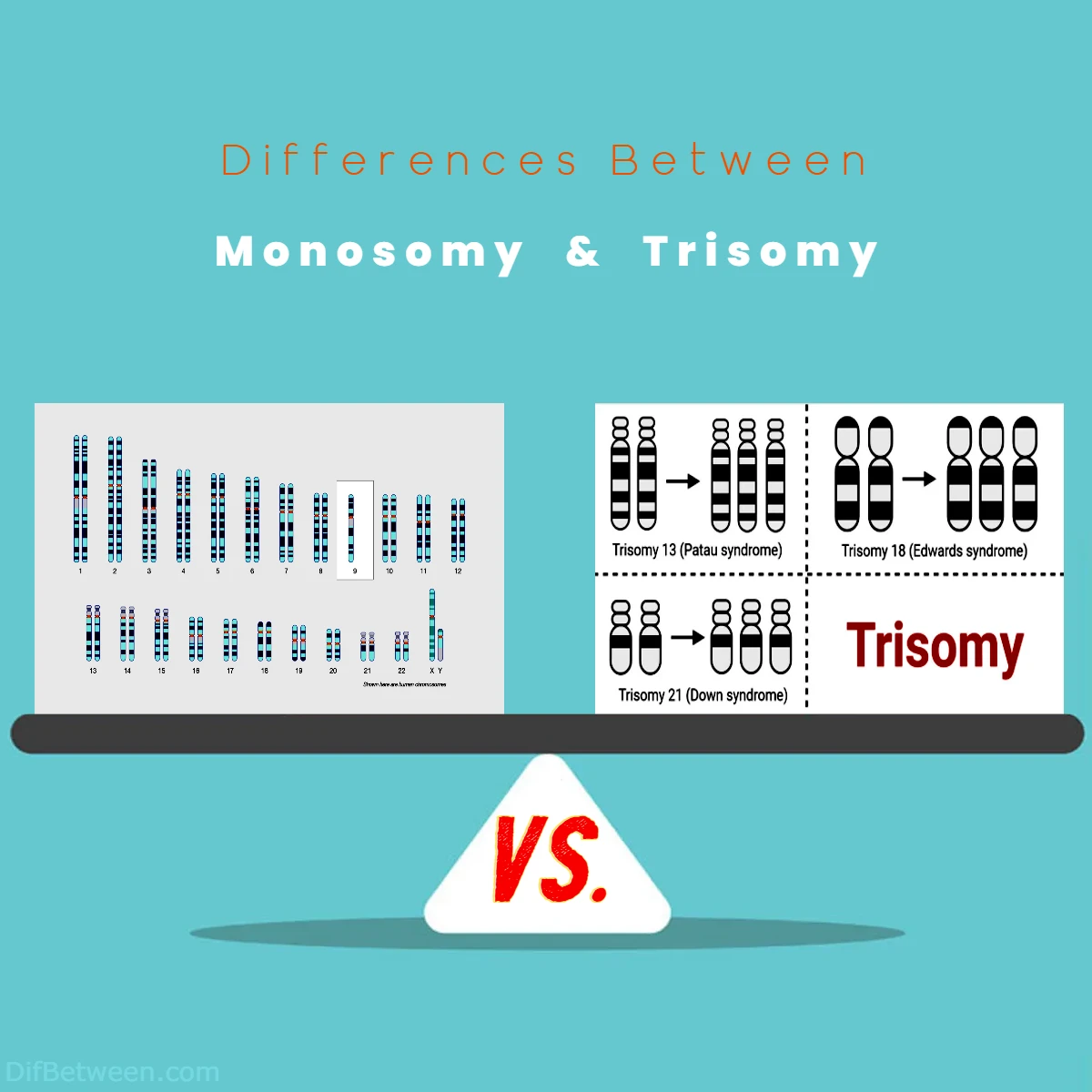
| Characteristic | Monosomy | Trisomy |
|---|---|---|
| Chromosomal Aberration | Missing one chromosome from a pair | Having an extra chromosome in a pair |
| Total Chromosome Count | 45 chromosomes (45,X for Turner) | 47 chromosomes (e.g., 47,XX for Down) |
| Most Common Example | Turner Syndrome (Monosomy X) | Down Syndrome (Trisomy 21) |
| Prevalence | Less common in comparison to trisomy | More common among trisomy conditions |
| Gender Impact | Can affect both males and females | Can affect both males and females |
| Severity of Health Effects | Varies depending on the specific monosomy condition | Varies depending on the specific trisomy condition |
| Fertility | Reduced fertility in some monosomy conditions, e.g., Turner syndrome | Reduced fertility in some trisomy conditions, e.g., Down syndrome |
| Unique Features | Cri du Chat Syndrome, characterized by a cat-like cry, is a specific monosomy condition | Down syndrome, characterized by distinctive facial features, is a well-known trisomy condition |
| Mosaicism | Can exhibit mosaicism, with some cells having the usual chromosome pair and others having the monosomy | Can exhibit mosaicism, with some cells having the usual chromosome pair and others having the trisomy |
| Diagnostic Tests | Karyotyping, fluorescence in situ hybridization (FISH), and medical imaging are used for diagnosis | Karyotyping, fluorescence in situ hybridization (FISH), and medical imaging are used for diagnosis |
| Treatment and Management | Focused on addressing specific symptoms and health issues associated with the missing chromosome | Focused on addressing specific symptoms and health issues associated with the extra chromosome |
| Support Services | Early intervention programs, therapy, and special education services are crucial for developmental and educational support | Early intervention programs, therapy, and special education services are crucial for developmental and educational support |
| Quality of Life | With appropriate care and support, individuals with monosomy conditions can lead fulfilling lives | With appropriate care and support, many individuals with trisomy conditions lead fulfilling lives |
| Advocacy and Awareness | Families often engage in advocacy efforts to promote awareness and support | Families often engage in advocacy efforts to promote awareness and support |
| Ongoing Research | Research focuses on understanding the genetic mechanisms leading to monosomy and developing targeted therapies | Research aims to understand genetic origins and improve support services for individuals with trisomy |
| Outlook for Affected Individuals | The prognosis and quality of life vary depending on the specific monosomy condition and the extent of symptoms | The prognosis and quality of life vary depending on the specific trisomy condition and access to medical care and support |
| Emotional and Social Impact | Emotional and social challenges may arise due to unique genetic makeup | Families may become advocates and seek specialized care and educational opportunities |
| Healthcare Needs | Ongoing medical care and support may be required, and families need to navigate complex healthcare systems | Ongoing medical care and support may be required, and families may need to access specialized services |
| Inclusivity and Advocacy | Advocacy efforts and awareness campaigns promote understanding and acceptance | Advocacy efforts and awareness campaigns foster a more inclusive society |
Monosomy, characterized by the absence of one chromosome from a pair, meets trisomy, where an extra chromosome joins the genetic ensemble. The narrative begins with the genetics that underpin these conditions, highlighting the origins and the genetic events that set them into motion.
Differences Between Monosomy and Trisomy
The main differences between Monosomy and Trisomy lie in their chromosomal count. Monosomy, such as Turner syndrome, entails the absence of one chromosome from a pair, resulting in 45 chromosomes. In contrast, Trisomy, exemplified by Down syndrome, involves an extra chromosome in a pair, leading to 47 chromosomes. While Monosomy affects both males and females and may vary in severity, Trisomy is also gender-neutral and comes with its distinctive set of health implications. These disparities are essential to grasp when considering genetic conditions and their implications.
Defining
Monosomy
Monosomy is a genetic condition that occurs when an individual is missing one chromosome from a pair in their cells. In humans, most of our cells carry 46 chromosomes, which are organized into 23 pairs. Each parent contributes one chromosome to each pair, resulting in a complete set of 23 chromosome pairs. Monosomy disrupts this delicate balance by leaving one chromosome unpaired in a particular pair. The most common and well-known form of monosomy involves the sex chromosomes and is called Turner syndrome.
Table 1: Common Monosomy Conditions
| Monosomy Type | Description |
|---|---|
| Turner Syndrome | Monosomy of the X chromosome, affecting females |
| Cri du Chat Syndrome | Monosomy of a portion of chromosome 5 |
Trisomy
Trisomy, on the other hand, is a genetic condition where an individual has an additional chromosome in a pair, resulting in a total of three chromosomes instead of the usual two. It is the opposite of monosomy. The most recognized trisomy condition is Down syndrome, which is caused by an extra copy of chromosome 21.
Table 2: Common Trisomy Conditions
| Trisomy Type | Description |
|---|---|
| Down Syndrome | Trisomy of chromosome 21, affecting both sexes |
| Edwards Syndrome | Trisomy of chromosome 18, leading to severe disabilities |
| Patau Syndrome | Trisomy of chromosome 13, associated with major birth defects |
Now that we have a basic understanding of what monosomy and trisomy are, let’s delve deeper into the causes of these genetic anomalies.
Causes of Monosomy and Trisomy
Monosomy Causes
Monosomy typically arises from a genetic error during the formation of a sperm or egg cell. This error can occur in several ways, leading to a variety of monosomy conditions. Some of the primary causes include:
- Non-disjunction: Non-disjunction is a failure of chromosomes to separate correctly during cell division. In monosomy, one of the chromosomes doesn’t end up in the resulting cell. This can happen during the formation of an egg or sperm cell, and if fertilization occurs with this faulty cell, the embryo will have monosomy.
- Deletion: Sometimes, a portion of a chromosome can be lost or deleted, leading to monosomy. Cri du Chat syndrome is an example of monosomy caused by a specific deletion on chromosome 5.
- Mosaicism: In some cases, monosomy may not affect all cells in an individual’s body. Mosaicism occurs when some cells have the usual chromosome pair, while others have the monosomy condition. This can result from a post-fertilization genetic mutation.
Trisomy Causes
Trisomy, like monosomy, also arises from errors during the formation of egg or sperm cells. The primary causes of trisomy include:
- Non-disjunction: Just as in monosomy, non-disjunction plays a significant role in the development of trisomy. In this case, an extra chromosome is present due to a failure of chromosomes to separate correctly during cell division.
- Translocation: Trisomy can also occur when a portion of one chromosome becomes attached to another, creating an extra copy of certain genes. This is known as translocation trisomy.
- Mosaicism: Similar to monosomy, trisomy can also exhibit mosaicism. Some cells have the typical chromosome pair, while others have the extra chromosome. This can result from a post-fertilization genetic mutation.
Now that we’ve explored the causes of monosomy and trisomy, let’s delve into the symptoms and health implications associated with these genetic conditions.
Symptoms and Health Implications
Monosomy Symptoms and Health Implications
The symptoms and health implications of monosomy vary depending on the specific chromosome that is affected and the extent of the genetic loss. Here are some general characteristics of monosomy:
- Turner Syndrome: This condition, involving monosomy of the X chromosome, predominantly affects females. Common symptoms include short stature, webbed neck, low hairline, and infertility. Turner syndrome can also lead to heart and kidney problems, as well as learning difficulties.
- Cri du Chat Syndrome: This rare condition is characterized by a high-pitched cry resembling the mewing of a cat. Individuals with Cri du Chat syndrome often have severe intellectual and developmental disabilities, as well as distinct facial features.
It’s important to note that the severity of symptoms can vary among individuals with monosomy, and some may have milder manifestations.
Trisomy Symptoms and Health Implications
Trisomy conditions are associated with a range of symptoms and health issues. Here are the key characteristics of some common trisomy conditions:
- Down Syndrome: Individuals with Down syndrome typically have intellectual disabilities, distinctive facial features, and a higher risk of certain health problems, such as congenital heart defects, respiratory issues, and leukemia. However, with appropriate support and healthcare, many people with Down syndrome lead fulfilling lives.
- Edwards Syndrome (Trisomy 18): Trisomy 18 is associated with severe developmental delays and multiple congenital anomalies. Most affected individuals do not survive beyond infancy, and those who do often have complex medical needs.
- Patau Syndrome (Trisomy 13): Trisomy 13 leads to severe intellectual and physical disabilities, as well as a range of congenital malformations, such as heart defects and brain abnormalities. Like Trisomy 18, survival beyond infancy is rare.
The health implications of trisomy conditions can be quite profound, and individuals affected by these conditions often require comprehensive medical care and support.
Diagnosis and Testing
Monosomy Diagnosis
Diagnosing monosomy typically involves a combination of clinical evaluation, genetic testing, and medical imaging. Here are the key steps in the diagnosis of monosomy:
- Clinical Evaluation: A healthcare provider may suspect monosomy based on physical and developmental characteristics. For example, in the case of Turner syndrome, the presence of a webbed neck and short stature may raise suspicions.
- Genetic Testing: The definitive diagnosis of monosomy is usually made through genetic testing, such as karyotyping or fluorescence in situ hybridization (FISH). These tests examine an individual’s chromosomes to identify the presence of a missing chromosome.
- Medical Imaging: In some cases, medical imaging, like ultrasound, may be used to assess the extent of any physical abnormalities associated with monosomy.
Trisomy Diagnosis
Diagnosing trisomy follows a similar pattern to monosomy diagnosis, involving clinical evaluation, genetic testing, and medical imaging:
- Clinical Evaluation: Physical and developmental characteristics are assessed, and the presence of certain features, such as the facial characteristics of Down syndrome, may lead to suspicions.
- Genetic Testing: The definitive diagnosis of trisomy is typically made through genetic testing, such as karyotyping or FISH. These tests examine an individual’s chromosomes to identify the presence of an extra chromosome.
- Medical Imaging: In cases of trisomy, medical imaging may be used to assess the extent of any physical abnormalities associated with the condition, particularly in prenatal diagnosis.
Both monosomy and trisomy can be detected during prenatal testing, allowing for early diagnosis and informed decision-making for expectant parents.
Treatment and Management
Monosomy Treatment and Management
The treatment and management of monosomy conditions focus on addressing the specific symptoms and health concerns associated with the missing chromosome. Here are the key aspects of managing monosomy:
- Turner Syndrome: Treatment may include growth hormone therapy to improve height, hormone replacement therapy to induce puberty and fertility, and surgical interventions for heart or kidney problems. Educational and psychological support is also crucial for individuals with Turner syndrome.
- Cri du Chat Syndrome: Management involves early intervention programs, speech therapy, physical therapy, and special education services to address developmental delays and intellectual disabilities. Medical care may be needed for associated health issues.
Trisomy Treatment and Management
Trisomy conditions often require comprehensive and specialized care due to the range of health implications. Here’s how trisomy conditions are typically managed:
- Down Syndrome: Early intervention services, including speech therapy, physical therapy, and occupational therapy, are essential for children with Down syndrome. Regular medical check-ups are crucial to address potential health issues. Many individuals with Down syndrome lead fulfilling lives and may benefit from educational and vocational support.
- Edwards Syndrome (Trisomy 18): Trisomy 18 has a high mortality rate, and medical care often focuses on providing comfort and palliative care. Surgical interventions may be considered for life-threatening conditions, but the overall management is challenging.
- Patau Syndrome (Trisomy 13): Trisomy 13 also has a high mortality rate, and medical care primarily involves palliative measures to ensure the best quality of life for affected individuals.
The treatment and management of trisomy conditions require a multidisciplinary approach involving healthcare professionals, therapists, and support networks.
Prognosis and Quality of Life
Monosomy Prognosis and Quality of Life
The prognosis and quality of life for individuals with monosomy can vary widely depending on the specific condition, the extent of symptoms, and the availability of medical care and support. Here are some general insights into the prognosis and quality of life for two common monosomy conditions:
- Turner Syndrome: With early diagnosis and appropriate medical interventions, many individuals with Turner syndrome can lead healthy and productive lives. Hormone replacement therapy can help induce puberty and address fertility issues. While there may be physical and developmental challenges, many people with Turner syndrome achieve a good quality of life.
- Cri du Chat Syndrome: The prognosis for individuals with Cri du Chat syndrome varies. Those with milder symptoms may achieve more independence and integration into society, while those with more severe intellectual and developmental disabilities may require lifelong support and care.
Trisomy Prognosis and Quality of Life
Trisomy conditions are generally associated with more profound health implications, and the prognosis is often less optimistic. Here’s a brief overview of the prognosis and quality of life for common trisomy conditions:
- Down Syndrome: Many individuals with Down syndrome lead fulfilling lives, although they may face various health challenges. Advances in medical care and educational support have significantly improved the quality of life for individuals with Down syndrome. Life expectancy has also increased.
- Edwards Syndrome (Trisomy 18): Trisomy 18 has a high mortality rate, with most affected individuals not surviving beyond their first year. Those who do face severe health challenges and may require extensive medical care.
- Patau Syndrome (Trisomy 13): Trisomy 13 is also associated with high mortality, and affected individuals often have complex medical needs. The quality of life for those with Trisomy 13 is limited, and many do not survive beyond their first year.
In both monosomy and trisomy cases, early intervention and comprehensive healthcare can significantly impact the prognosis and quality of life for affected individuals.
Genetic Origins
Monosomy Origins
The origins of monosomy typically trace back to the process of meiosis, which is the cell division that produces eggs and sperm. During meiosis, chromosomes are supposed to separate evenly into different cells. However, errors can occur, leading to the loss of one chromosome from a pair. Some factors contributing to monosomy origins include:
- Non-disjunction: Non-disjunction is the primary mechanism behind monosomy. During non-disjunction, chromosomes fail to separate correctly, leading to one cell receiving two copies of a chromosome and another cell none.
- Deletion: In certain cases, a portion of a chromosome may be deleted, causing monosomy for that particular chromosome.
- Mosaicism: Mosaicism, a condition in which not all cells have the monosomy, can also contribute to the origins of this genetic condition. It can result from post-fertilization genetic mutations.
Trisomy Origins
Trisomy, like monosomy, arises from errors during meiosis. However, in trisomy, the error leads to the presence of an extra chromosome in a pair. The primary origins of trisomy include:
- Non-disjunction: Similar to monosomy, non-disjunction is the most common cause of trisomy. During meiosis, chromosomes fail to separate correctly, leading to one cell receiving an extra chromosome.
- Translocation: Translocation trisomy occurs when a portion of one chromosome becomes attached to another, creating an extra copy of certain genes.
- Mosaicism: Mosaicism can also lead to trisomy, with some cells having the usual chromosome pair, while others have an extra chromosome. This can result from post-fertilization genetic mutations.
Understanding these genetic origins is essential in both the diagnosis and treatment of monosomy and trisomy.
Specific Monosomy and Trisomy Examples
Let’s take a closer look at some specific examples of monosomy and trisomy to gain a better understanding of their unique characteristics.
Monosomy Examples
Turner Syndrome: Turner syndrome is one of the most well-known monosomy conditions and occurs in females. It involves the loss of one X chromosome, resulting in a total of 45 chromosomes (45,X) instead of the usual 46. Common features of Turner syndrome include short stature, a webbed neck, and infertility. Other health concerns may include heart and kidney problems.
Cri du Chat Syndrome: Cri du Chat syndrome is a rare monosomy condition caused by the deletion of a portion of chromosome 5. It is named after the high-pitched cry that resembles a cat’s meowing. Individuals with Cri du Chat syndrome often have severe intellectual and developmental disabilities and distinct facial features.
Trisomy Examples
Down Syndrome: Down syndrome is one of the most prevalent trisomy conditions, affecting both males and females. It results from an extra copy of chromosome 21, leading to a total of 47 chromosomes (47,XX or 47,XY). Individuals with Down syndrome typically exhibit intellectual disabilities, distinctive facial features, and a higher risk of certain health problems, such as congenital heart defects and leukemia.
Edwards Syndrome (Trisomy 18): Trisomy 18 is characterized by the presence of an extra copy of chromosome 18, resulting in a total of 47 chromosomes (47,XX or 47,XY). It leads to severe developmental delays and multiple congenital anomalies. Most affected individuals do not survive beyond infancy, and those who do often have complex medical needs.
Patau Syndrome (Trisomy 13): Trisomy 13 involves an extra copy of chromosome 13, leading to a total of 47 chromosomes (47,XX or 47,XY). It is associated with severe intellectual and physical disabilities, as well as a range of congenital malformations, including heart defects and brain abnormalities. Survival beyond infancy is rare.
These specific examples provide a glimpse into the diversity of monosomy and trisomy conditions, each with its own unique genetic basis and clinical features.
Impact on Affected Individuals and Families
Understanding the impact of monosomy and trisomy extends beyond medical knowledge. It encompasses the emotional and social aspects that affect affected individuals and their families.
Impact of Monosomy
Monosomy, such as Turner syndrome and Cri du Chat syndrome, can have a profound impact on individuals and their families. The challenges associated with monosomy conditions may include:
- Emotional Impact: Affected individuals may experience emotional and psychological challenges due to their unique genetic makeup. These challenges can affect self-esteem and body image, particularly in conditions like Turner syndrome that may result in distinctive physical features.
- Social Impact: Individuals with monosomy conditions may require additional support in social and educational settings. Their families often become advocates, seeking specialized care and educational opportunities to help their children thrive.
- Fertility Concerns: In the case of Turner syndrome, infertility is a significant concern. This can have emotional and psychological implications for affected individuals who wish to have children.
Impact of Trisomy
Trisomy conditions, such as Down syndrome, Edwards syndrome, and Patau syndrome, present unique challenges for individuals and their families:
- Healthcare Needs: Individuals with trisomy conditions often require ongoing medical care and support. Families may need to navigate complex healthcare systems and advocate for their loved ones.
- Educational and Therapeutic Support: Early intervention services, educational support, and therapeutic interventions play a crucial role in improving the quality of life for individuals with trisomy conditions. Families may need to access these services and work closely with educators and therapists.
- Inclusion and Advocacy: Families of individuals with trisomy conditions often engage in advocacy efforts to promote inclusion and support for their loved ones. This may include participating in awareness campaigns and working with community organizations.
In both monosomy and trisomy cases, a strong support network and access to appropriate medical and educational resources are essential for improving the quality of life for affected individuals and their families.
Ongoing Research and Future Prospects
Advancements in genetics and medical research continue to offer hope for individuals affected by monosomy and trisomy conditions. Ongoing research is focused on understanding the underlying genetic mechanisms, developing targeted therapies, and improving overall care and support. Here are some key areas of research and future prospects:
- Genetic Research: Ongoing genetic research seeks to uncover the precise mechanisms of non-disjunction, translocation, and other genetic events that lead to monosomy and trisomy. This knowledge can inform potential interventions and therapies.
- Therapeutic Approaches: Researchers are exploring targeted therapeutic approaches, including gene therapy and pharmacological interventions, to mitigate the effects of genetic imbalances in monosomy and trisomy conditions.
- Support Services: The development of specialized support services and educational programs is a key focus. These services aim to enhance the quality of life for individuals with monosomy and trisomy and their families.
- Inclusivity and Advocacy: Ongoing advocacy efforts and awareness campaigns contribute to a more inclusive society for individuals with these genetic conditions. These initiatives promote understanding, acceptance, and support.
As research progresses, we can anticipate further improvements in the diagnosis, treatment, and overall quality of life for individuals affected by monosomy and trisomy.
Conclusion
In this extended exploration, we’ve delved even deeper into the fascinating world of genetics, specifically focusing on monosomy and trisomy. These genetic anomalies, such as Turner syndrome, Cri du Chat syndrome, Down syndrome, Edwards syndrome, and Patau syndrome, offer us a glimpse into the incredible complexity of our genetic makeup.
While the impact of monosomy and trisomy on affected individuals and their families can be significant, ongoing research and support networks offer hope and opportunities for a brighter future. As science and medicine continue to advance, our understanding of these conditions deepens, promising a more inclusive and supportive world for individuals, regardless of their genetic diversity.
FAQs
Monosomy is a genetic condition where an individual is missing one chromosome from a pair, resulting in a total of 45 chromosomes. Trisomy, on the other hand, is a genetic condition where there is an extra chromosome in a pair, leading to a total of 47 chromosomes. The key difference lies in the chromosomal count and the presence or absence of a chromosome.
Both Monosomy and Trisomy can affect both males and females. The impact of these conditions is not limited to a particular gender.
A well-known Monosomy condition is Turner syndrome, characterized by the absence of one X chromosome in females. A common Trisomy condition is Down syndrome, resulting from an extra copy of chromosome 21.
The severity of health effects varies depending on the specific Monosomy or Trisomy condition. Monosomy and Trisomy can lead to a range of physical, developmental, and medical challenges, with the impact differing from one condition to another.
Diagnosis typically involves genetic testing such as karyotyping or fluorescence in situ hybridization (FISH). Clinical evaluation and medical imaging may also be part of the diagnostic process.
The treatment and management of these conditions focus on addressing specific symptoms and health concerns associated with the genetic imbalance. Early intervention, therapy, and specialized support services play a crucial role in improving the quality of life for affected individuals.
Yes, ongoing research aims to understand the genetic origins, develop targeted therapies, and improve support services for individuals with these conditions. Advances in genetics and medical research continue to offer hope for affected individuals and their families.
To explore in-depth insights into the distinctions between Monosomy and Trisomy, we invite you to read the full guide titled “Differences Between Monosomy vs Trisomy.” It provides a comprehensive overview, delving into genetics, diagnosis, treatment, and the impact on affected individuals and their families.
Read More:
